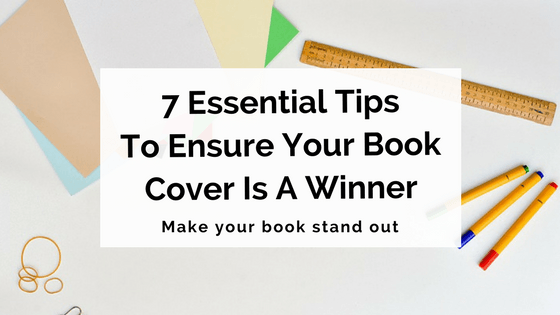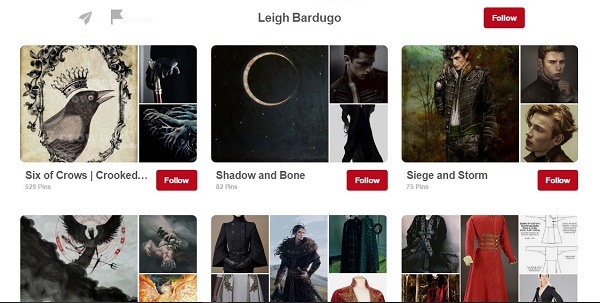Books are often judged by their cover. And with all the work you’ve put into your story, you deserve a winning book cover – one that will pique the reader’s interest to glance at the blurb on the back, and crack open the pages.
So how can you ensure your book cover draws in readers and does your story justice? Read on for seven essential tips for ensuring your book cover is a winner.

Table Of Contents
1. Be inspired by the market
It’s time to visit your favourite bookstore. Bring a pen and notepad, and be prepared to stand there flicking through covers.
Head to your book’s future shelf, and get your designer eye ready. You want to focus on newer releases, within the last three to five years, as design trends and technologies are always changing.
Here are some features of book covers to look out for:
- Are most of the covers photographic, illustrated or design-based?
- Are the titles and author names usually in serif or sans serif typeface?
- What is the trend for the choice of title font? Is it simple? Heavily stylised?
- How large is the title text? How large is the author’s name? Where are they positioned on the cover?
- What colours are usually used? Dark? Light? Does one colour appear more often than others?
- What range of colours is usually used? Do covers only use two or three colours, or several?
- What is the most common key visual feature? A person, a landscape, a symbol?
Your goal is to create a unique cover that stands out, but still looks like it fits on its shelf. Identifying the key features common to books of your genre will give you a framework to start from.

Compare covers to find key elements
It’s useful to compare your genre with others. For example, fantasy books are a mix of photographic and illustrated, while crime are mostly photographic. And fantasy books almost always use serif font, with the title heavily stylised, while crime books use simple, crisp sans serif font.
You’ll also want to take note of sub-genres. For example, modern and dark fantasy titles often have photographic or highly realistic illustrated covers, while more traditional ones tend towards illustrated and ‘painted’ covers. The few crime novels with illustrated covers are usually whodunit stories.
Knowing the demographic of the reader allows you to craft a combination of type and graphics to grab that reader’s eye, then instantly send the message that this book is for you.” — Fred Showker
The age of your target audience is another point to take into consideration. The younger the target audience, the more likely the cover will be illustrated and depict a character figure. Just look at the different design choices made for J. K. Rowling’s Harry Potter covers for children and adults.

Check out competition winners
Another great source of cover design ideas is to look through winners of recent cover design competitions, or even personal lists by professionals or readers of your genre. Here are some to start out with:
- 50 Books 50 Covers competition winners 2016
- e-Book Cover Design Award Winners November 2016
- Jaqueline Thomas’ top 50 book covers
- Paste Magazine’s 30 Best Book Covers of 2016
While sticking to recent design trends is generally recommended, if your book is similar to an older style or author – say, a Jane Austen-inspired story – an older style of cover may suit.
At the end of the day, what’s more important than an awesome cover is a cover that suits your story: a cover that conveys the heart and soul of the world within.

2. Identify your book’s tone
You’ve got to dig a little deeper than genre. What emotions does your story convey? What is the overarching feel of the story, the way the story is written?
A murder mystery can be a range of tones: light-hearted, analytical, creepy. Readers should be able to tell the tone of a story by looking at the book’s cover.
Once you identify the tone, you need to translate it into a visual form. Alternatively, sometimes creating a visual representation of your story can help you identify its tone.
Create a mood board
A mood board is a collage of images typically used by various designers in their initial stages of brainstorming and developing a visual brand. Creating a mood board for your story can help you design a cover, convey ideas to a hired designer, and inspire further covers if your book becomes a series.
Pinterest is a great place to start looking for images. Your mood board can even include covers from books that have a similar tone to your story. As well as photos and illustrations, you can include symbols, colours and fonts.
Colour plays an important role in your mood, and thus should be obvious when looking at your entire mood board.” — Loretta Widen
If you’re unsure, there are lots of handy tutorials and examples of creating mood boards to get you started. As well as Pinterest boards, you can tap into free programs such as Canva and Fotor to put together your collage.
As a mood board is for personal use, there’s no need to wary about image copyrights. Whether you’re a picky chooser or you find many pictures to narrow down from, your aim is to have between 5 and 12 images in your mood board.

3. Find the right designer
Professional book cover designers have a lot going for them. If you’re a debut author, start your career with a bang and hire a professional. Or, if you’ve published before and never used a professional, look one up to help you take that next professional step.
But how do you find the right designer for your book? In many ways, it’s a bit like finding the right publishing house, or the right bookstores if you self-publish. With the rise of self-publishing, there are many cover design companies to choose from.
Design style, personality, work schedule, communication preferences, experience – all are important factors to consider when making your cover designer choice.” — Toni Tesori
Have a look at your favourite book covers, and book covers similar to what you want, and look up their designer. Check out their portfolio of previous works and see if their website gives details on their design process.
Of course, if you’ve got a contract with a publishing house, finding a designer is part of the publisher’s responsibility. Often publishing houses have relationships with a selection of designers, and will pick one of them who best suits your book’s market.

Working with a designer
Every designer is different. That’s why it’s important to do your research on how they handle the process. If their website doesn’t let you know these details, send them an email and ask.
Points you may want to check include how closely they work with the authors, how many iterations they tend to go through, and their familiarity with design, photographic and illustrative cover art.
Understanding the general approach
There are some stages all professional cover designers follow. The first is defining the target audience. Hopefully by now, you’ve nailed this, and can provide the details of your future readers in a quick email.
The second step is defining your book. This is all about the tone. Different designers will ask for different information: a few key chapters, your pitch, a summary or something else. If you’ve made a mood board, now’s the time to let the designer know and send it through!
Designers are skilful professionals, but they don’t necessarily have a lot of time to work on your book cover design and probably don’t have time to read the novel.” — Graeme Shimmin
Next, the designer will come up with different concepts, or drafts. They will show you these and ask for feedback, before going back and creating one or a few solid designs.
The designer will then seek further feedback. At this point, it’s good to gather a few extra opinions from people both familiar and unfamiliar with your story.
From there, a little more tweaking may be necessary, and then your cover design is ready to be splashed over marketing material and wrapped around your book’s pages.
If you’re interested, Orbit Books publishing house has given a fascinating in-depth peek into the cover design process for David Dalglish’s Shadowdance series.
Going through a publishing house
If your novel is being published by a traditional publishing house, your editor and the marketing team will be responsible for providing information to the designer and the ultimate decision.
Depending on the publishing house culture, you may or may not see the design concepts nor have an opportunity to input.
An ugly cover that sells a ton of books wins over a gorgeous cover that sells ten copies.” — Lauren Panepinto
At the end of the day, your editor and marketing team want your book to sell. And they will choose the cover that all their industry experience tells them will most likely achieve that outcome.

DIY options
If you’re keen and confident enough to take the DIY approach, there are a few ways you can go about it. Professional images can be purchased from sites such as Shutterstock. Avoid sourcing images from free locations, as they often have copyright against commercial use.
Adobe programs such as InDesign and Illustrator are most popular with professional book cover designers, though Photoshop can also be used. Some free programs you can design covers on include Canva, Gimp and even MS Word.
Be aware that designing covers takes time, and requires a familiarity of design theories such as Gestalt. In most cases, hiring a professional designer is worth every dollar.

4. Keep it simple, but be playful
Some of the best modern book cover designs are minimalistic. But a simple design shouldn’t be boring or predictable. It’s difficult to achieve a unique yet simple design, but if you have fun and experiment wildly, you may just strike gold.
Studies show you only have eight seconds to persuade the reader to take a chance on your book. Make it count.” — Jacqueline Thomas
The advantages of a simple design include recognisability and memorability. Think of Stephenie Meyer’s Twilight series. The covers can immediately spring to mind due to their minimalistic designs, and can be recognised at a glance. George R. R. Martin’s modern A Song of Fire and Ice series covers are another example.
Symbols, visual metaphors or significant objects are key when creating a simple cover. Think about what single visual feature could sum up or represent a significant part of your story, and then play around with layout and colour.

5. Make the cover thumbnail-friendly
With changing technology habits, we interact with book covers differently. The creation of the ebook and the rise of online shopping means many readers will come across your cover as a small thumbnail image on a crowded screen.
There has to be an impact at a thumbnail size … Look at it and look away. Can you tell what kind of book it is?” — Anthony Puttee
A thumbnail-friendly cover typically features contrasting colours, large text and an uncluttered design. The file will also need to be the correct size and resolution to display correctly and not stretch.
Also keep in mind that the older versions of Kindle, which are still in use, only show covers in greyscale. So if you intend to have an ebook version, make sure the cover is recognisable and eye-catching without colour.

6. Come up with various art concepts
The same way your novel needs to go through multiple drafts, so does your book cover. But in addition to iterations of the same cover, it’s important to have various design concepts that are significantly different.
A picture paints a thousand words, but there are more than a thousand words in your manuscript. Try emphasising different elements, and experimenting with realistic or more abstract, stylised options.
Orbit uses roughly an equal amount of photo shoots, illustration, and what I call ‘pure design’ covers.” — Lauren Panepinto
Some covers will immediately jump out to you as working, or not working. And that’s good. Discard or keep them and keep working.

7. Test your design
You’re almost there! Down to about three almost-print-ready cover designs, it’s time to unleash your potential covers onto the world.
Seek out the opinions of everyone you know, particularly your target audience. Get them to pick their favourite out of your final designs, and take note of any specific features they like, dislike or are confused about.
Don’t judge their comments. Just gather as much data as you can. Authors such as Joanna Penn found success gathering lots of data through a vote on her blog:
It helped me realise how subjective images are and how emotions and personal history can really shape the way people see the potential story behind the cover.”
Remember, you want your cover to appeal to readers and correctly convey the genre and tone of your story. So when you show your potential covers around, ask what they think the book is about and whether they’d pick it up.

* * *
The process of creating a book cover can be daunting for many writers. While we are familiar with the pen, we use it very differently to visual designers. But with a basic understanding of what to expect and the right designer for your book, your next novel’s cover can be a winner.
2 responses to “7 Essential Tips To Ensure Your Book Cover Is A Winner”
Excellent post! Perfectly explained the key elements that one need to take care while creating a book cover design. being a designer at designer at designhill i always look for inspiration and tips that helps me to create better designs
I very happy that today I found your article, because now I creating cover for my own book! Thank you, Kyla